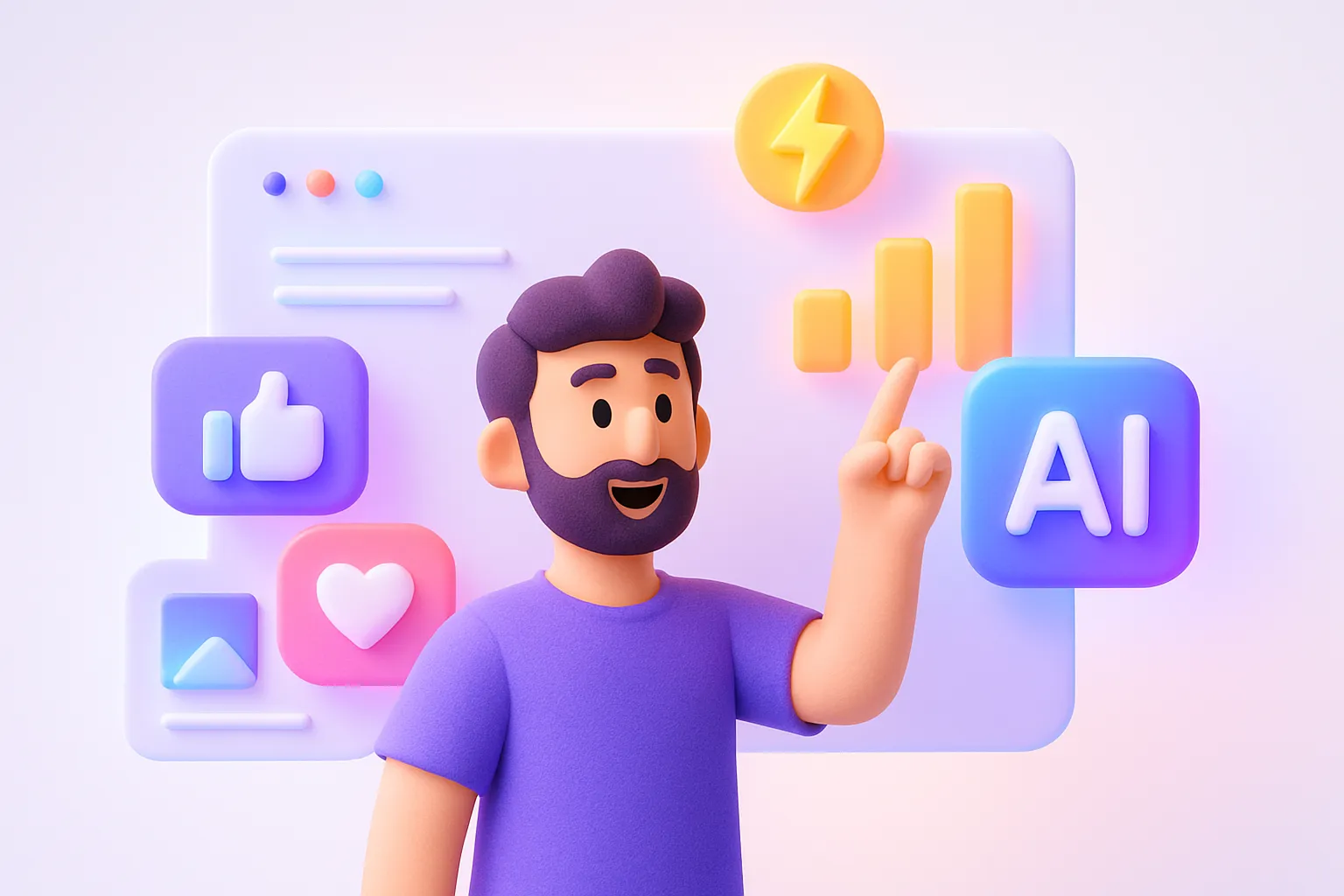Automating Social Media Content Creation with AI

Why Agencies Are Turning to AI for Social Posts
Your clients expect daily content that sparks engagement, drives clicks, and keeps brand voice consistent. Doing all that by hand is slow and expensive. AI tools now draft captions, size images, and pick posting times in minutes, not hours. A U.S. Chamber of Commerce survey found 98% of small businesses already use some form of AI, so agencies that stick to manual workflows risk falling behind.
Benefits Agencies Can Bank On
- Speed at scale. Generate a month of cross-platform posts before your next coffee refill.
- Data-backed creativity. Tools mine past performance and trending topics to suggest angles that resonate.
- Consistent brand voice. AI can train on client guidelines so every tweet, reel, or LinkedIn update sounds on-brand.
- Smarter scheduling. Platforms like FeedHive crunch engagement data and surface the best send times, lifting reach without guesswork source.
- Cost control. Free your team from repetitive drafting and let them focus on strategy, reporting, and upsells.
Best-in-Class AI Tools for Social Content
The market is crowded, but a few platforms stand out for agency workflows.
Sprout Social
Sprout’s AI assistant studies client analytics, then suggests post ideas and copy based on what historically drives clicks source.
Copy.ai
Paste a campaign brief or product sheet and get dozens of platform-specific captions. Great for A/B testing tone or CTAs.
Conbase.ai
Conbase.ai allows you to store and use your social media prompts to generate any kind of content in bulk source.
Lumen5
Turn blog posts or press releases into short videos with text-to-video generation. Ideal for channels like TikTok and YouTube Shorts.
FeedHive
Predicts virality scores, recommends hashtags, and schedules content automatically based on historical engagement patterns.
How to Roll AI Into Your Agency Playbook
- Audit your workflow. Map tasks that burn the most hours, drafting captions, repurposing long-form content, scheduling, and shortlist those for automation.
- Train the model on real examples. Feed tools with high-performing posts and brand guidelines so the AI knows tone, vocabulary, and banned phrases.
- Set guardrails. Automate drafts, not final posts. Require human review to catch off-brand humor, sensitive topics, or potential misinformation source.
- Integrate analytics. Connect social dashboards so the AI learns what works and adjusts recommendations weekly.
- Pilot with one client. Start small, gather results, then roll the workflow across your roster. Success stories sell the upgrade.
Real-World Wins
TikTok’s Symphony Creative Studios
TikTok’s new suite lets advertisers generate videos from text prompts, build digital avatars, and auto-produce variations for A/B tests. Early adopters cut production time by 50%, according to Reuters.
B2B Agency Boosts Lead Gen
A mid-size agency used Copy.ai to craft 100 LinkedIn posts from a single white paper. Engagement rates doubled, and the client saw a 30% uptick in demo requests within six weeks.
Recruitment Firm Cuts Turnaround Time
By pairing FeedHive with ChatGPT, a recruiting agency now converts every job description into a week of employer-branding posts in less than an hour, freeing staff to focus on candidate outreach.
Related Reading
If you also manage e-commerce clients, our piece on leveraging AI to automate product descriptions shows how spreadsheet-to-content pipelines drive scale. Many of the same principles apply to social media automation.
Final Thoughts
AI won’t replace your strategists, but it will replace agencies that ignore it. Start small, keep humans in the loop, and turn the saved hours into sharper campaigns and happier clients.



